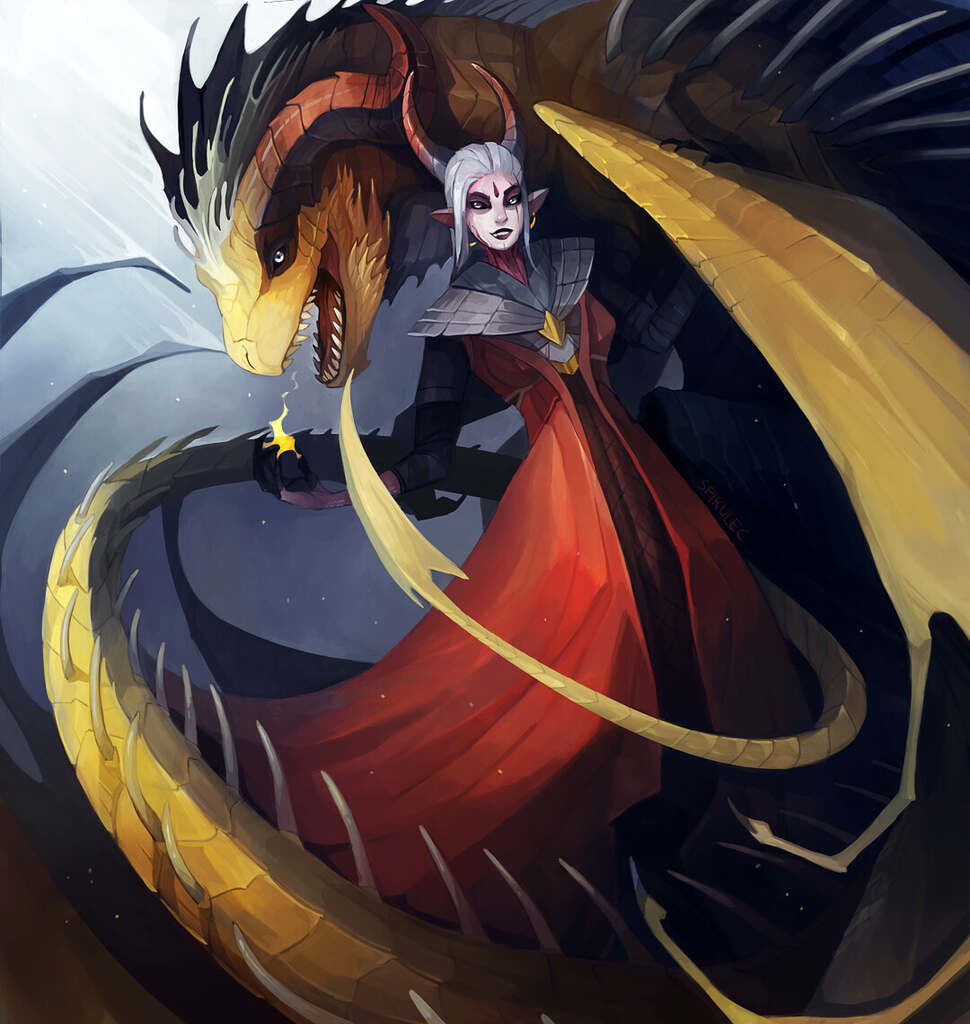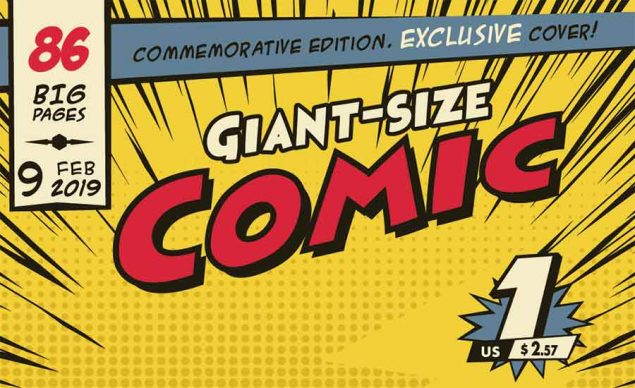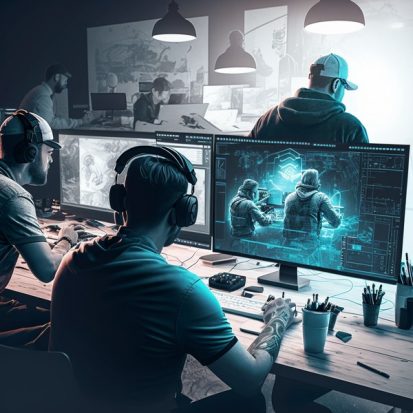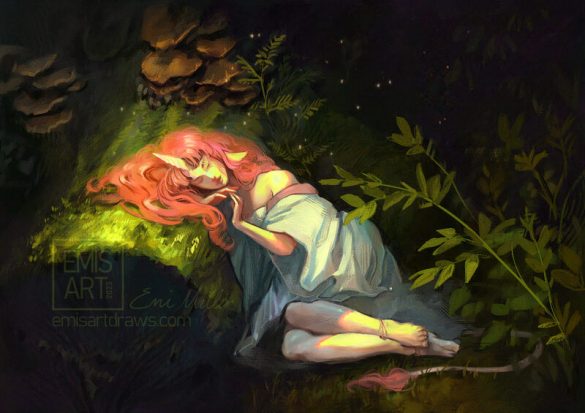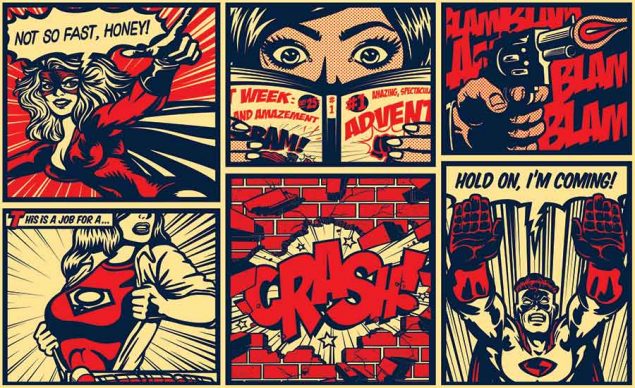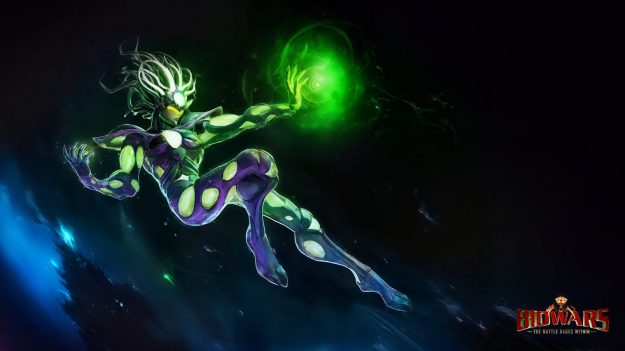Related Resources
We have the pleasure of chatting with Zuza “Spikulec” Grużlewska — a talented Polish artist behind magical-looking characters and breathtaking illustrations that have captured our attention from the get-go.
Zuza shares her inspiring art on her Instagram profile, where you can catch a glimpse of her creative mind and enjoy her compelling illustrations that are bound to transport you to fantastical realms and spark your imagination.
Zuza’s journey to becoming a terrific illustrator and game character artist is an inspiring one. If you’re interested in becoming an artist yourself, we’re positive that the conversation with Zuza will provide you some guidance and allow you to peer into the professional illustrator’s mind.
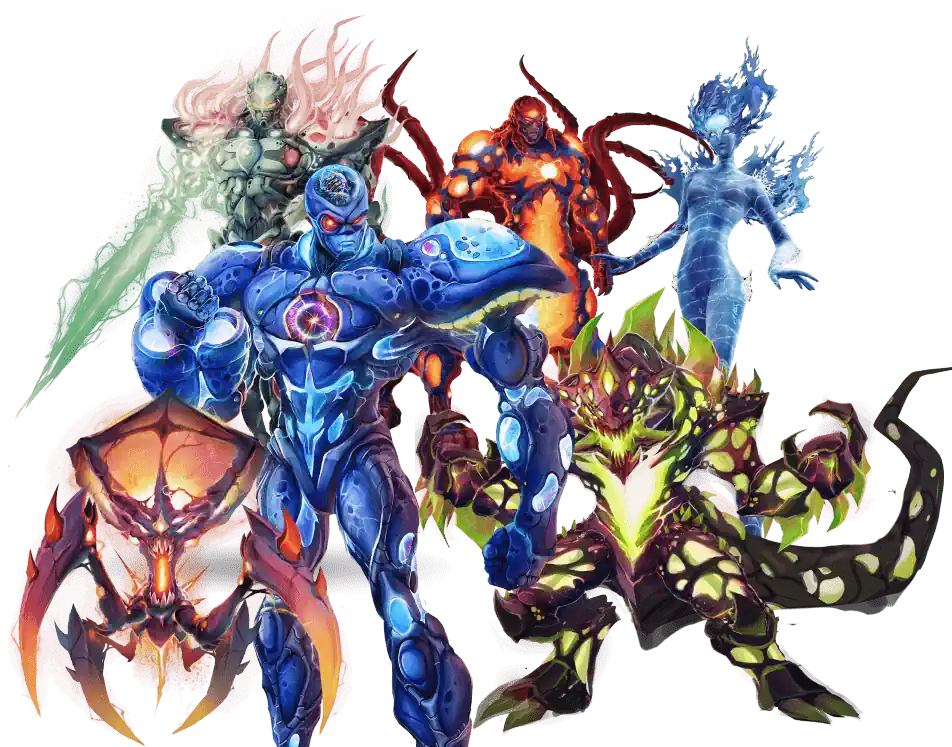
1. Hi Zuza! Can you give us an overview of your background and experience as an artist?
Sure! I “started” to do art quite late — when I was in high school. Around that time, I realized that becoming an aviation engineer may not be for me after all.
I was surrounded by very ambitious and skilled people, who outranked me in grades, so I started to look for something that I could do and that my fellow students couldn’t.
I was lucky to meet a 3D artist, who, at the time, was working on Cyberpunk 2077 first trailers. He explained to me what being a part of a game development team is like for an artist.
We talked only once or twice, but those conversations helped me find my way.
I started to learn how to become an artist in gamedev and practice my skills by helping in Polish MMORPGs, and then, while at university, I also worked in a few student-led enterprises.
March 2024 is going to be my third year in gamedev.
I work mostly on mobile and indie titles for Mousetrap Games, and I’m what’s called a “2D Generalist”, which basically means that I’m a person who does everything needed at a given moment.
I take care of every aspect of 2D art, from marketing materials to game assets, UI elements, textures and even some game design.
When I end my daily work, I sit down and do freelance or private stuff, which you can see on my Instagram.
I’m a huge TTRPG fan, and whenever I’m hired as an illustrator, I feel truly excited.
My proudest moment was when I got to paint for the third-party Dungeons and Dragons 5e campaign Surf & Sabotage by Banished Atlas.
Don’t get me wrong, I love my games, but thinking about illustrations is what keeps me going.
2. Your artistic style is unique, with lots of dream-like and mythical-looking elements and characters. How did you develop your artistic expression?
To be honest, this is the style I always used for basically everything, until I got my first real job as an artist, which required me to become more flexible.
Painting faces and eyes in a specific way and using certain colors feels comfortable and natural to me.
I’d say this particular way of drawing may have been mostly influenced by a mixture of American and French comics, with some addition of Polish illustrations. You call it unique, I jokingly call it wonky.
It’s definitely not perfect, and it doesn’t fit every project, so I mostly use it for my own designs.
Maybe one day I will get to be a lead artist in an indie project, but until then, I keep this style for myself. Well, for myself and for a few people who want me to paint for them in that particular way. They seem to like it, and that’s the best feeling of validation for me as an artist!
View this post on Instagram
3. We know that you’re the main artist behind games such as Match Hero, Green Thumb and Rooms of Dread. Does creating game art differ from other types of illustrations? If so, how?
Oh, game art is a completely different thing from illustrations!
I had a few students from art schools show me their portfolios, asking me if they stood a chance of being employed in mobile gamedev.
And don’t get me wrong, their works were amazing, but what they showed me were illustrations —not something that could be used in my field of work.
There are some rules in gamedev, especially mobile.
You do things you wouldn’t normally consider fun to illustrate or paint, like purchasable chests, assets for ads or icons.
You need to work under certain restrictions, as well as cooperate with developers and designers.
You rarely get to pick the style of the game.
There’s a certain soft, commercial look to most mobile games, which should be easily marketable.
That’s why I don’t often work as a character artist.
The things I do are not considered cute enough. In fact, my previous art director thought my works were slightly too creepy.
I entered a competition and created art for the game Rooms of Dread. I was my own art director for a moment, so I had the liberty to create some creepy monsters, and nobody could stop me. That experience was incredibly satisfying, even if I still had to stick to a specific mobile game aesthetic.
Match Hero is a rare case where I got to officially design game characters — there’s a funny looking dog paladin in an armour, some cat enemies, etc. My Instagram followers would probably never recognize those designs as my work.
The same goes for Green Thumb. An amazing Polish artist — Agata Domino — created all characters for the game and I worked on the buildings and textures. Again, most people will never know I did it because, not only is the style different to what my followers know me for, but also most mobile games don’t credit the artists.
4. What does the process of creating a character look like for you? What information do you need to know before you start sketching?
I have a questionnaire that I send to every customer who wants me to create an illustration for them.
The questionnaire contains a list of points that help me get a solid brief.
When I get a commission, I ask for a description of what a character should look like. I also need a name and the character’s story.
It’s probably silly, but I still remember most of the characters I created, even though I designed more than a hundred heroes. They are really dear to me.
Sometimes I can get a better understanding of what a client wants by learning the character’s backstory than from the other references.
Some people send me just a few sentences about characters, but there have been times when I’ve gotten PDF files that contain more than 20 pages. I read it all, no matter how complex the descriptions may be, because this is where the artist’s passion for creation and the heart of the character both lie.
Besides that, I also ask for the pose and/or scene references, since some people have a very detailed vision in their mind and photo references.
Sometimes, I get briefs with collages for inspiration, and other times, the briefs contain pre-made characters designed by somebody else.
I spend at least one afternoon making notes about every single request. Then, I start sketching.
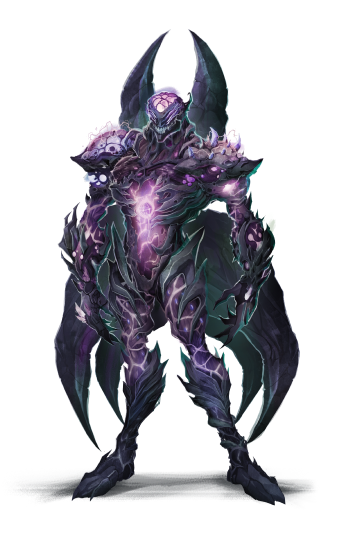
5. The colors you use in your work look quite subdued. Even the light greens and pink hues aren’t overpowering. Why did you decide to use such a palette in your work?
I try to imitate my watercolors.
During my time at university, I fell in love with this medium.
Back in the day, all my artworks were exclusively done in black and white, and I was mainly obsessed with intaglio.
I know that, under proper conditions, watercolors can be extremely vibrant, but I used to paint on cheap paper with Russian paints of questionable quality.
I got used to certain blues and pinks, and I recreate those shades in my artworks.
Even though I’ll sometimes try a different approach to coloring, that usually doesn’t work for me and I go back to my Cobalt Blues and trashy Carmines.
View this post on Instagram
6. How do you approach projects outside game art? What does your creative process look like?
Outside of gamedev and freelance work, I mostly paint messy and unfinished drawings.
Gamedev is technical, freelancing requires a lot of focus and effort, so, when I can, I like to experiment.
Sometimes I work more than 12 hours a day, and after that, I just want a little bit of freedom.
I treat personal art as a mean of quickly expressing my ideas, without having to worry about clean edges or attractive designs.
I’d play some tabletop role-playing games (TTRPG), and I mostly use art to help other players immerse themselves in those games.
I sketch the characters, the NPCs, the enemies and sometimes the environment. I don’t take specific steps, it’s all a bit chaotic.
View this post on Instagram
7. How do you generate ideas for your personal projects? Can you describe your brainstorming process?
I have a lot of reference folders, sorted by themes and projects.
There, I save everything, like artworks made by other people, photographs, color palettes, music and even short stories.
Currently, I take most of my inspiration from folklore, so my folders are filled with links to articles and sites on that subject.
Then, I let my ideas marinate a bit until I decide how to translate the references and ideas to art.
When I freelance, I mostly paint either grim, upset men or pretty ladies (and don’t get me wrong, those are always cool!), so I try to go beyond those archetypes.
I want to design scary bug elves, carnivore deer and funny mole gnomes.
I aim to read about obscure creatures and go crazy when developing concepts for such characters.
And most of all, I want my art to inspire my tabletop players — they’re my favorite people.
8. What software and tools do you prefer to use in your work, and why?
I spoke a bit about using traditional tools, such as watercolors and classic printmaking, so I won’t talk about those again.
When it comes to software, I use Adobe Photoshop at work, but I also practiced how to use Affinity Photo a lot.
You may not be familiar with this one, but Affinity Photo is a very cool software that guarantees a similar experience and file handling to PS, but without certain disadvantages (*cough* subscription business model price *cough*).
I am also a big fan of Krita, which is just phenomenal open-source free software that doesn’t seem to be that popular among artists.
It’s a great one to use when you’re starting your journey with digital painting or animation.
Maybe one day I will be able to try Procreate, but for the foreseeable future, I’m stuck with my trusty old laptop.
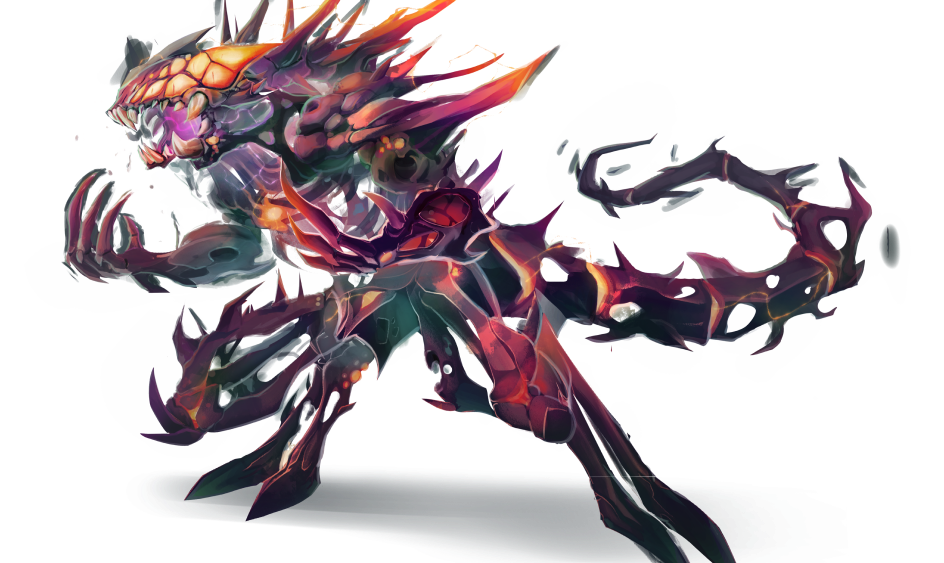
9. How do you adapt to changes in the industry? Are there any particular trends that you’re currently excited about?
I try to stay useful.
I expand my skills and hope to remain a valuable asset, both to my fellow co-workers and to the industry as a whole.
Currently, I aim to learn Spine 2D and expand my portfolio. Who knows what the industry will demand in a year or two.
Like most of my colleagues, I’m keeping an eye on AI image generation tools. The layoffs in the gamedev industry are very concerning.
I don’t know if I’d be able to do something else other than art for a living.
I can only hope that the market will continue to have a place for one small, wonky artist, despite all the changes.
On the bright side, I’m really excited that the TTRPG industry is expanding, and so many small companies get to present their unique products.
And look at the animated movies!
It seems that hand-painted textures are getting more popular in the mainstream. That is very cool, as texture work is one of the coolest things you can do as an artist. I’d certainly be happy to do textures every day. Working with 3D artists is an incredible experience.
10. If you could illustrate a cover for any existing comic book series or create an original character for a famous comic book or game franchise, which would it be and why?
Star Wars!
I have quite a lot of Star Wars comics, both the modern ones by Marvel and the older ones by Dark Horse.
I used to write fan-made scripts for Star Wars comics in high school.
My attempts weren’t that good, but I’ve always been a big fan of the franchise.
I would love to give it another try one day, I think my style wouldn’t look too weird for the franchise!
Thank you for agreeing to do this interview with BIOWARS, Zuza! It was a pleasure talking to you!
If you’re interested in getting to know other comic book artists, check out these interviews with Sean Damien Hill, Ceren Sultan Ekinci, Marko Djeska, Anthony Carranza, Flaviu Pop, David Jacob Duke, Lucius Cross, Gonçalo Lopes and Chrigel Farner.

